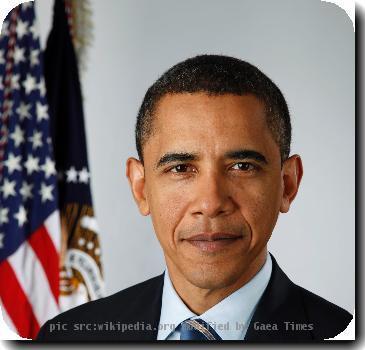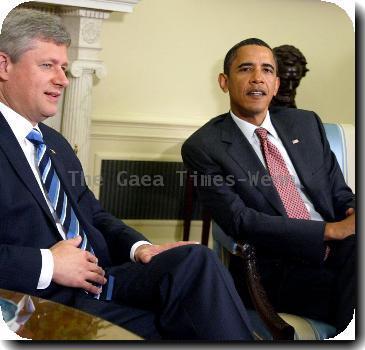Watch lists have helped nab militant in Indonesia, but experts say they have major limitations
By Anthony Deutsch, APFriday, January 8, 2010
Experts say terror watch lists have limited uses
JAKARTA, Indonesia — A month before a Nigerian man whom American intelligence suspected of terrorist ties tried to blow up a Detroit-bound jetliner, Indonesian authorities successfully used a U.S. watch list to pick out an arriving passenger.
The arrest of Filipino Abdul Basir Latip, a suspected al-Qaida-linked militant, is an example of effective counterterrorism intelligence-sharing at a time when the aviation community is examining security failures that enabled Umar Farouk Abdulmutallab to board a plane on Christmas Day with explosives-laden underwear.
President Barack Obama has ordered new terror watch list guidelines in the wake of the attempted attack — though Abdulmutallab was in an intelligence database, he was not on a no-fly list — but analysts say such lists are only one small part of successful counterterrorism. Information-sharing and proper analysis of data is key.
“Lists are valuable in making sure governments around the world are able to track individuals,” said Dr. John Harrison, an aviation security specialist at Singapore’s S. Rajaratnam School of International Studies. “But you don’t want to put too much emphasis on these lists. It’s an overstatement to say: ‘OK, now we are safe.’”
While lists are a valuable intelligence tool, they cannot be solely relied upon to prevent terrorists from boarding flights, Harrison said. Even though Abdulmutallab, 23, was not on a watch list, his behavior should have triggered alarms that would have led to his capture anyway, he said.
Abdulmutallab apparently bought his ticket in cash, was flying the same day, had no check-in luggage and purchased a one way fare.
Together, those details should have tripped a standard international security procedure, Computer Assisted Passenger Screening or CAPS, Harrison said.
“This case seems more to have been failure, not of lists, but a failure on the human side of intelligence, accurately assessing the threat and tracking the information to see if there were any links,” he said. “It was an analytical failure.”
U.S. officials have said at least part of their failure to stop Abdulmutallab was because they had not put all the puzzle pieces together.
Alain Chouet, former chief of the security intelligence service at France’s counterintelligence agency, DGSE, estimates that roughly 600,000 names provided by national authorities are circulating on lists worldwide.
But he says the way those names are gathered is faulty. He estimated such lists are only 10 percent reliable.
“These are idiotic lists,” he said, adding some people are blacklisted based on anonymous accusations. “We don’t know how these lists are made.”
In the Philippines, most of the approximately 100 people on a watch list have been charged with or sought by authorities in connection with previous violent crimes. In Indonesia, the names include hundreds of convicts, known associates of terrorists and individuals identified by intelligence agencies as suspicious.
In Latip’s case, there was no information that the Filipino was planning an immediate attack, but he was a high-value target wanted for alleged involvement in the 1993 kidnapping of a Christian missionary by al-Qaida-linked Abu Sayyaf militants who had eluded capture for years, according to Ric Diaz, a senior Philippine counterterrorism official.
The Indonesians were acting on a tip from Interpol, which was sharing information from a U.S. watch list, when they nabbed him on Nov. 21 at Soekarno-Hatta international airport with the help of photographs provided by the FBI. He arrived from Syria using a fake passport.
This coordination is key to successful security, analysts said, more than the watch lists themselves.
Al Chaidar, an Indonesian terrorism analyst, warned of the weaknesses of the Indonesian watch list, saying it was based on faulty intelligence from police and anti-terrorism squads.
“It is often not valid because many terrorists were using several fake names and fake IDs, while our personal identification system is still in a shambles,” said Al Chaider, who like many Indonesian uses one name.
Trisno Heryadi, a spokesman for state airport operator Angkasa Pura II, declined to give details about how the airport uses the passenger watch list, which only includes the names of Indonesians. To catch foreigners like Latip, authorities rely on Interpol.
The watch list in the Philippines is supplemented with data from America’s FBI, Interpol and the United Nations, said Ferdinand Sampol, immigration chief at the Ninoy Aquino International Airport in Manila.
It names just over 100 people — compared with the 18,000 on a U.S. watch list of passengers who are designated for additional security searches or barred from flying altogether.
“Most are Middle Eastern nationals. From Asia, many are from Indonesia, suspected Jemaah Islamiyah” members, Sampol told The Associated Press, referring to the Philippines’ list.
The lists have clearly helped to track down fugitives and monitor suspects, but authorities on Friday were unable to name specific cases when attacks had been thwarted because individuals had been recognized.
“We are very concerned that such infiltration happened recently in the U.S., and we have responded by increasing our passenger screening,” said Heryadi, the Indonesian airport spokesman.
Associated Press writers Angela Charlton in Paris, Niniek Karmini in Jakarta and Oliver Teves in Manila contributed to this article.
Tags: Asia, Barack Obama, Indonesia, Jakarta, Java, Manila, National Security, North America, Philippines, Southeast Asia, Terrorism, United States



